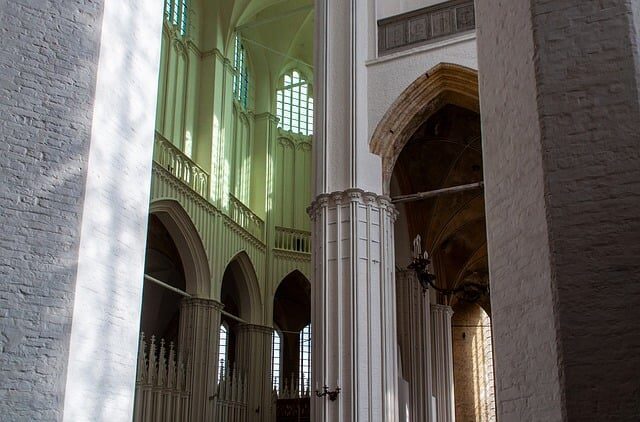Sweden is renowned for its commitment to environmental sustainability, and this ethos extends to its buildings and infrastructure. The concept of sustainable architecture in Sweden is about creating spaces that are efficient, environmentally responsible, and healthy for occupants. This holistic approach combines innovative designs with smart technology to reduce energy consumption and promote well-being.
From Stockholm’s Royal Seaport to the cultural beacon that is the Sara Cultural Centre in Skellefteå, Sweden showcases some of the most advanced examples of sustainable architecture globally. These projects reflect a deep understanding of the balance between human needs and environmental stewardship, setting a benchmark for eco-friendly construction worldwide.
- Sustainable Architecture in Sweden: Examples of Innovative Designs
- What Are the Key Features of Sustainable Architecture in Sweden?
- How Is White Arkitekter Leading the Way in Sustainable Design?
- What Are the Most Notable Sustainable Architecture Projects in Sweden?
- How Does Urban Planning Contribute to Sustainable Architecture in Sweden?
- What Sustainable Architecture Jobs Are Available in Sweden?
- How Can Sustainable Architecture Mitigate Climate Change?
- Sustainable Architecture in Sweden: Examples of Innovative Designs
- What Are the Key Features of Sustainable Architecture in Sweden?
- How Is White Arkitekter Leading the Way in Sustainable Design?
- What Are the Most Notable Sustainable Architecture Projects in Sweden?
- How Does Urban Planning Contribute to Sustainable Architecture in Sweden?
- What Sustainable Architecture Jobs Are Available in Sweden?
- How Can Sustainable Architecture Mitigate Climate Change?
Sustainable Architecture in Sweden: Examples of Innovative Designs
Sweden is a treasure trove of innovative design when it comes to sustainable architecture. The country is sprinkled with structures that stand as testaments to the ingenious minds of Swedish architects and urban planners. One exemplary model is the Hammarby Sjöstad district, which was transformed from an industrial area into an eco-friendly residential neighborhood. This project is often cited as a leading example of urban sustainability in Sweden.
Another iconic project is the Sara Cultural Centre, which rises high with its wooden structure, showcasing the versatility and eco-friendliness of cross-laminated timber (CLT). The Royal Seaport is yet another undertaking that aims to become a climate-positive district, illustrating Sweden’s unwavering commitment to sustainable development.
These projects go beyond mere construction; they are liveable artworks that embody Sweden’s philosophy of integrating nature, technology, and the well-being of its citizens. The use of innovative building materials in Sweden is central to these designs, ensuring longevity and minimal environmental impact.
What Are the Key Features of Sustainable Architecture in Sweden?
The key features of sustainable architecture in Sweden revolve around energy efficiency, material sustainability, and creating a symbiotic relationship between built and natural environments. These include the use of renewable energy sources such as solar and wind power, green roofs, and smart heating systems that leverage Sweden’s advancements in renewable energy in Swedish architecture.
Another feature is the focus on building materials that have a reduced carbon footprint, such as locally sourced timber or recycled steel. Sweden’s architects also prioritize natural light and open spaces, ensuring that buildings are not just sustainable but also promote a high quality of life.
Moreover, Swedish sustainable architecture emphasizes smart urban planning, which includes developing well-connected public transport systems to reduce reliance on cars. This urban planning contributes to creating inclusive and vibrant communities that support sustainable lifestyles.
How Is White Arkitekter Leading the Way in Sustainable Design?
White Arkitekter, one of Sweden’s most forward-thinking architectural firms, is at the forefront of sustainable design. They champion the integration of technology with natural elements to create spaces that are not only functional but also restorative. Their approach often involves collaborating with ecologists and engineers to ensure that each project is sustainable from conception through to construction and beyond.

Their portfolio includes a variety of projects that range from residential buildings to cultural institutions. Each project by White Arkitekter is an example of how construction can work in harmony with the environment, rather than against it, showcasing their belief in the power of architecture to combat climate change.
By prioritizing biodiversity, water management, and energy efficiency, White Arkitekter sets a high standard for eco-friendly construction in Sweden. Their designs are not just about the present needs but also about ensuring resilience and sustainability for future generations.
What Are the Most Notable Sustainable Architecture Projects in Sweden?
In Sweden, notable sustainable architecture projects are setting international benchmarks. Among these, the Royal Seaport aims to be fossil fuel-free by 2040. Another groundbreaking project is the Sara Cultural Centre, which is one of the world’s tallest wooden buildings, greatly reducing the carbon footprint typically associated with construction.
Hammarby Sjöstad is yet another shining example, designed from the ground up with sustainability in mind. This urban district features eco-friendly waste management systems, energy recovery, and buildings constructed with green materials.
These projects represent a small fraction of Sweden’s commitment to sustainable building practices, illustrating the country’s pioneering role in shaping the future of architecture.
How Does Urban Planning Contribute to Sustainable Architecture in Sweden?
Urban planning plays a pivotal role in the success of sustainable architecture in Sweden. It ensures that environmental considerations are integrated into the earliest stages of urban development. Sweden’s planners focus on creating walkable cities with extensive bike paths, green spaces, and public transportation networks that minimize the need for cars.
Strategic placement of services and amenities is also a key aspect, reducing travel distances and promoting a localist approach to urban living. This planning philosophy facilitates collaborative urban design in Sweden, bringing together various stakeholders to create holistic, sustainable communities.

Sweden’s urban planning also includes adaptive reuse of buildings, preserving historical and cultural value while updating them for energy efficiency and modern use. This approach extends the life cycle of structures and reduces the environmental impact of new construction.
What Sustainable Architecture Jobs Are Available in Sweden?
Sustainable architecture jobs in Sweden span a variety of roles, reflecting the interdisciplinary nature of the field. Opportunities range from architects specialized in green designs to sustainability consultants who help integrate eco-friendly practices into both new and existing structures.
Urban planners, environmental engineers, and landscape architects also play crucial roles in shaping Sweden’s sustainable cities. These professionals are often involved in large-scale projects that require a deep understanding of both the built environment and ecological systems.
Additionally, the growing focus on sustainable materials has led to a rise in demand for experts in green construction materials, such as CLT. These individuals work to ensure that the environmental impact of building projects is kept to a minimum.
How Can Sustainable Architecture Mitigate Climate Change?
Sustainable architecture has a significant role to play in mitigating climate change, particularly as the building sector is responsible for a large portion of global energy use and carbon emissions. By designing buildings to be more energy-efficient and utilizing renewable energy sources, architects can drastically reduce the carbon footprint of the built environment.
Incorporating green spaces and promoting biodiversity within urban areas also contributes to carbon sequestration and the improvement of air quality. The emphasis on impact of architecture on climate change in Sweden is strong, with the country setting ambitious targets to achieve net-zero emissions.
Through sustainable architecture, Sweden is not only addressing the immediate challenges of climate change but also creating resilient infrastructures that can withstand and adapt to future environmental conditions.

In the following video, we delve into one of Sweden’s exemplary sustainable architecture projects, providing insights into how these innovative designs are shaping the future of construction and urban living:
Sweden’s journey towards sustainable architecture is not just a series of isolated projects but a movement that is reshaping the entire fabric of its urban environments. The integration of systemic sustainability with smart building practices sets a global standard, influencing architects and urban planners worldwide. As Sweden continues to innovate and implement these designs, it offers a blueprint for a future where architecture exists in harmony with the natural world, promoting both environmental sustainability and an enhanced quality of living for all.

